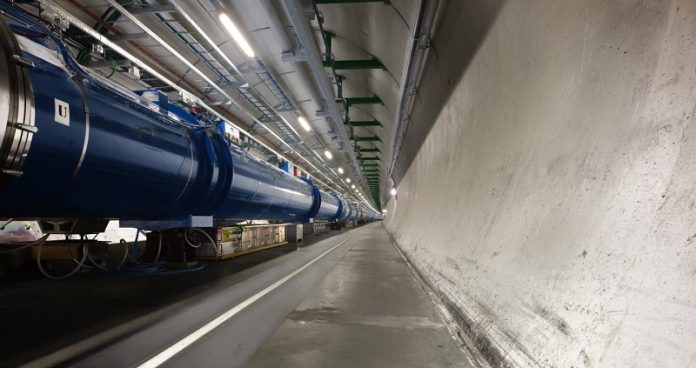
The world’s most powerful particle accelerator, the Large Hadron Collider (LHC) at CERN, is entering exciting new territory.
For the first time ever, the LHC is smashing together protons and oxygen ions—and soon, it will collide oxygen with oxygen, and even neon with neon.
These unique experiments will run from June 29 to July 9, marking a short but ambitious research campaign.
This special run isn’t just about trying something new—it’s the result of years of planning and months of technical preparation.
The oxygen and neon beams being used in the LHC were first produced in a facility called Linac3 and then passed through a chain of accelerators before finally reaching the LHC.
Each machine along the way had to be carefully tuned to handle these new types of particles.
The first collisions—between protons and oxygen ions—are especially challenging. That’s because protons and oxygen ions don’t behave the same way inside the accelerator.
Their different charge-to-mass ratios mean that, if left uncorrected, they wouldn’t collide in the right place.
To solve this, LHC engineers carefully adjust the speed and momentum of each beam so that the collisions happen precisely at the center of the four main experiments: ALICE, ATLAS, CMS, and LHCb.
This campaign is a major opportunity for scientists to gather new data. The collisions will help researchers learn more about things like cosmic rays, the strong nuclear force, and the quark–gluon plasma—a super-hot state of matter believed to have existed just after the Big Bang.
It’s not just the big experiments getting involved. A smaller experiment called LHCf, which studies cosmic rays, has added a new detector along the beamline near ATLAS to capture data from the proton–oxygen collisions.
Later in the campaign, this detector will be swapped out for a calorimeter to support the upcoming oxygen–oxygen and neon–neon collisions.
Engineers are also using this opportunity to test crystal collimation, a system designed to better control ion beams. Controlling ions is trickier than controlling protons, and this new method could make future operations more efficient.
One unique challenge of working with oxygen beams is a phenomenon called “beam pollution.” As oxygen ions collide, they create secondary particles that mimic oxygen’s charge and mass, potentially interfering with the experiment. This “transmutation effect” may force researchers to occasionally remove and replace the beam to keep the data clean—but no one knows for sure how serious the problem will be. That’s something the upcoming analysis will reveal.
In the coming days, all eyes will be on these rare and groundbreaking collisions.
Source: CERN.



